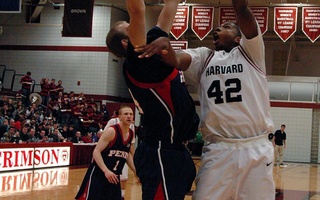Nestled in a fern planter in the entry to my house, eyes closed and legs crossed, sits a life-size stone Buddha. My mother drove it up some years ago in a blue Isuzu hatchback from an artist colony in Big Sur. It wouldn’t have been my decorating choice: for a long time, in fact, I found it actively distasteful. We weren’t Buddhists. It looked kitschy. It invited awkward questions. And it seemed an uncomfortable relic (something to go with the Flokati rug). In my head I christened the Buddha with the dumb name Mr. B and moved on.
I remembered it on the way to Big Sur, which we finally got round to visiting this January. Car nearly scraping the cliff wall at a corner, there Bixby Bridge suddenly was in front of us: land dropping away and the Pacific stretching for miles, broken only by a lighthouse and craggy rocks. In the backseat I turned the pages of Henry Miller’s “Big Sur and the Oranges of Hieronymous Bosch.” It was easy to see why Miller had chosen to live here for 18 years—the place was a half-dream. It made even the exiled Polish poet Czeslaw Milosz pause for breath: In his diary of 1987 he wrote that “between steep hills, there is a gully formed by a stream; luxuriant grass, trees, shade, bindweed, masses of lady’s-smock near the water, the same magical greenery that appeared near the ancient cloister in Nonza.”
Like all those places skirting the Pacific along Highway 1 from Eureka to Pismo Beach, though, Big Sur is ultimately a small town. There are hamburger shacks, gas stations, maybe a pie shop if you’re lucky, but mostly it’s surrounded by uninhabited wilderness. Miller writes grandiosely that this is “paradise. There being nothing to improve on in the surroundings, the tendency is to set about improving oneself.” And yet, as quickly becomes clear, “paradise” is full of quirky characters I know would drive me mad. One of the more innocuous is one “Gilbert,” who “would rub himself down with olive oil and hide behind the bushes in back of the house to take a sun bath, the music going full blast—Shostakovich, Gaspard de la Nuit, Beethoven quartets, Vivaldi, flamenco, Cantor Rosenblatt.” An unnamed Samoan bully lurks in the hot springs to accost bathers with facts about India, and Miller’s houseguest Conrad “Devil in Paradise” Moricand’s constant requests for specially-sized writing paper, fancy toothpaste, exotic drugs, and Gauloises bleues grow so exasperating Miller is forced to evict him.
Deep down, Miller realizes the snags in his utopia, and some pages later amends his statement: “Certainly paradise, whatever it be, contains flaws. One’s destination is never a place but a new way of looking.” What follow are subtle meditations on how to live in an imperfect world: “Even if it lasts for only a few moments, the privilege of looking at the world as a spectacle of unending life and not as a repository of persons, creatures, and objects to be impressed into our service is never to be forgotten.” This comes as a refreshing alternative to some of the less subtle socially activist writing of the late 1950s.
What Miller means is that paradise is never given—it must be manmade. But there are two ways in which this paradise might be created. One is through revolution; the other is by adapting what already exists. There is value to recognizing the breaking point—when the current leader is performing so poorly, and civil liberties are so endangered, that the government is not worth preserving. But there is value too in recognizing the need for patience, compromise, and willingness to endure the slowness of constitutional reform in the long years until the next election.
The most interesting question regarding the revolts in Arab countries to me is not necessarily where they are happening (the pressure cooker of the Middle East, in countries headed by authoritative leaders) or how (“social media”), but why they are happening at this moment in particular. Writers from media outlets from MSNBC to the Wall Street Journal have issued statements supporting the rebels in defense of freedom, democracy, and the Arab equivalent of apple pie. But el-Qaddafi has been in power for four decades, nearly all tumultuous ones: periodically replacing the concrete frame of his bullet-proof tent and replenishing his retinue of 40 virgins. It is true that many factors in Libya make full-scale action difficult (a very diverse ethnic and linguistic population including 140 distinct tribes, a strong Sufi element promoting a metaphysical rather than activist Islam, arbitrary arrests and government censorship), but nothing about these obstacles makes them any easier or more difficult to overcome now than before. How does one explain such protracted forbearance in the civilian population?
Strangely enough, it was while suffering undemocratic conditions that the Libyan population proved itself most ably. Merit exists in seeking to adapt to circumstances first, rather than immediately turning to physical violence. A critical moment, real or perceived, did arrive, and action was necessary—but the perseverance up to the point of agitation should also be admired.
America, unlike Libya, is not prepared for or in need of violence in the streets, but in many aspects it does remain badly in need of change—through reformism, not revolution. Opening the door back home, the first thing I saw was the Buddha, serene despite the barking dog and the talking television in the next room someone had forgotten. The country was still going through a “jobless recovery”: indeed, according to Bureau of Labor Statistics, 13.9 million Americans are still unemployed. It will be a long, slow process to set things right. But Miller had found his utopia in Big Sur; and I thought that we can work at making this country unspoiled for us; and somehow, very far from home, Mr. B, too, had found his paradise.
Jessica A. Sequeira '11, a former Crimson associate editorial editor, is a social studies concentrator in Winthrop House.
Read more in Opinion
These Boots Are Made for Walking…Come Rain or Shine


















